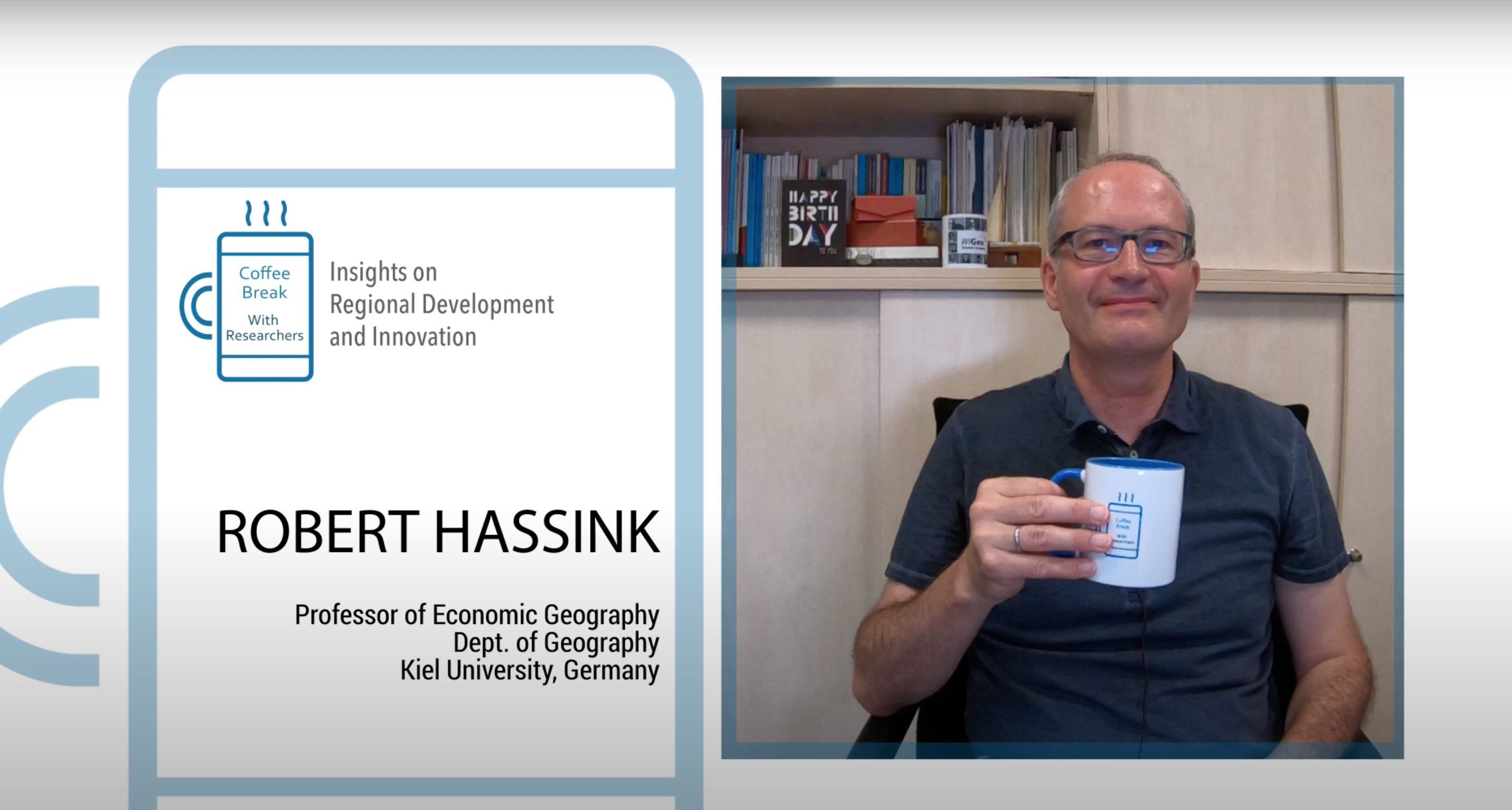The article
Robert Hassink, Xiaohui Hu, Dong-Ho Shin, Sakura Yamamura & Huiwen Gong (2018) The restructuring of old industrial areas in East Asia, Area Development and Policy, 3:2, 185-202
The researcher
Robert Hassink
Professor of Economic Geography
Dept. of Geography,
Kiel University, Germany
The interview
Hello Robert! thank you for accepting this invitation to a coffee break how are you doing?
I´m fine thanks for inviting me!
I am having a black coffee from costa rica. Are you having any coffee today?
No I actually don’t like coffee – I drink green tea instead.
That’s good to know I want to talk with you about a paper you wrote in which you analyze how regions get locked in. Could you please tell me the main idea of the paper?
The paper is an empirical study on lock-ins and the role of lock-ins in the restructuring of old industrial areas. And I looked in this in this paper at four regions with a strong industrial concentration in Germany and in south Korea and I looked at two sectors ship building and textile industry.
I understand that the key notion of the paper is being locked in could you please provide us with a definition of this?
Lock in is a concept that has is that has been introduced into academic science by evolutionary economies long time ago they were focusing on technological lock-ins but it’s particularly Gernot Grabher in his famous study on the Ruhr area in the early 90s who introduced this concept into economic
geography and regional economic development. And it refers to mechanisms we can find in regional economies that lead to the hindrance or blocking necessary restructuring processes in old industrial areas and to give you an example in the case of the Ruhr area and also some other old industrial as we’ve seen during a long time uh heavy lobbying for subsidies to support the main industry in the regional economy which led to a negative part dependence and actually the lack of restructuring in these these areas.
Thank you for clarifying that and which is what you say are the main findings of the paper?
My main findings were that it’s actually difficult to generalize about the factors having an effect on the strength or weakness of of regional lock-ins. My expectation was actually that for example the the specific characteristics of
the industry would affect the strength of the lock ins for example in the case of ship building because of large enterprises a strong influence of labor unions and also a heavy spatial concentration in certain regions I expected strong regional lock-ins whereas in the case of textile industry I expected very weak lock-ins
because that industry is characterized by small and medium-sized enterprises and the weaker role of labor unions for instance.
And which was the main motivation you had for doing this research?
My main motivation started actually in the early 1990s when I did my Phd at that time I did research on the restructuring of old industrial areas particularly in the Ruhr area and I read this paper I talked about by gennady and over and I found it very fascinating this concept and particularly the explanations for a lack of restructuring and the lack of adjustment and adaptation in old industrial areas I liked a lot, but i also noticed that although this content has been very popular it was not researched in other industries and in other regions so my aim was to to find out whether we find these kind of regional logins not only in the Ruhr area but also in other other old industrial areas in other countries and also in other industries as I said shipbuilding and textile industry.
Could you please tell me which ones were the main policy implications of your findings?
One of my findings was also to that regional lock ins actually are influenced by actors, political and policy actors at several spatial levels so not only the regional the local regional level plays an important role but also the national and in the case of Europe supernational level plays an important role so in order to understand this phenomena of regional logins we need to do research on several spatial scales, which was not done that much in the case of the Rural area and the study by Gernot Grabher.
Thank you for clarifying that, those were all my questions. I want to thank you once again and for having this time to chat with me and hope to see you next time bye-bye !!Yeah thanks it was my pleasure thank you bye-bye
If you’re interested in more details about this academic publication you can find here the link below
Find us on twitter, facebook and youtube. Or listen to our
podcast on spotify see you next time bye-bye !!!

